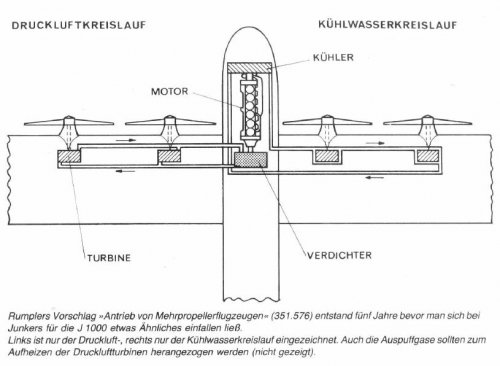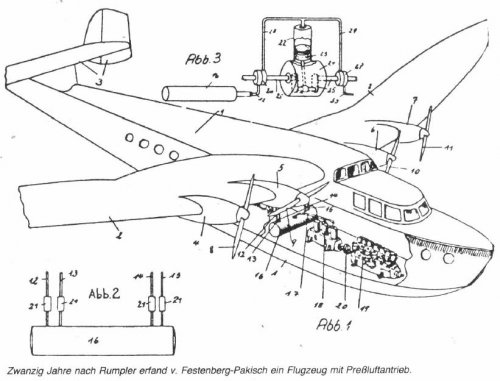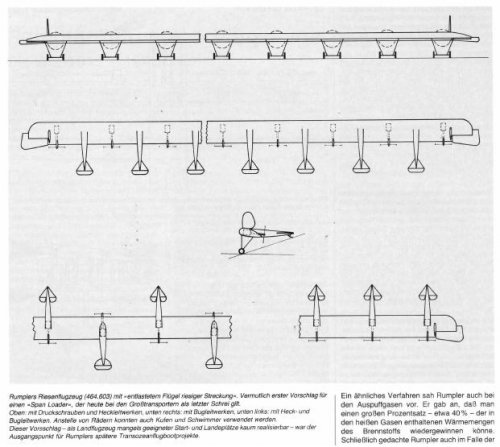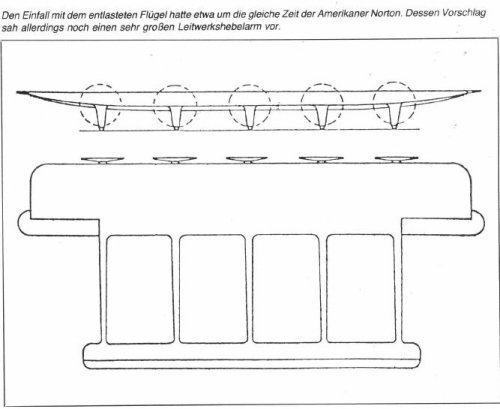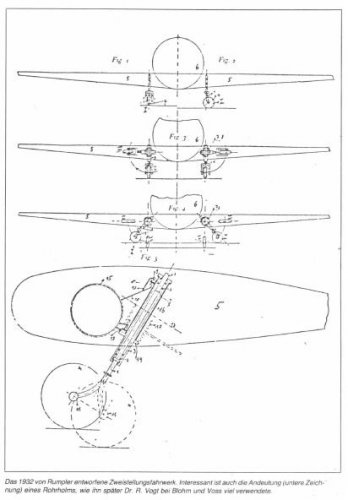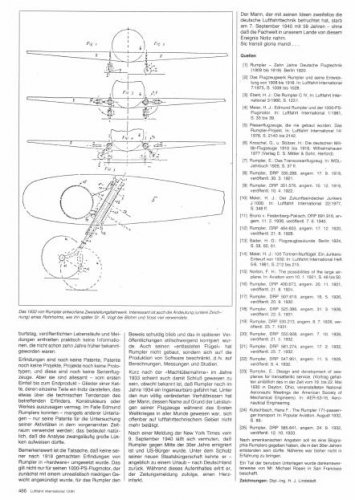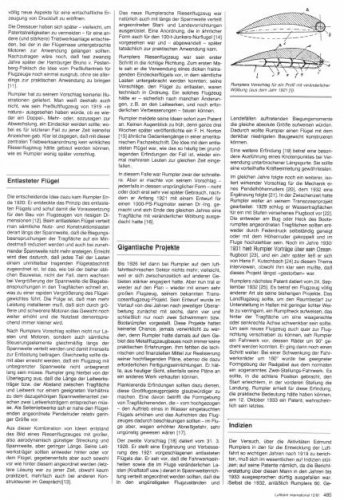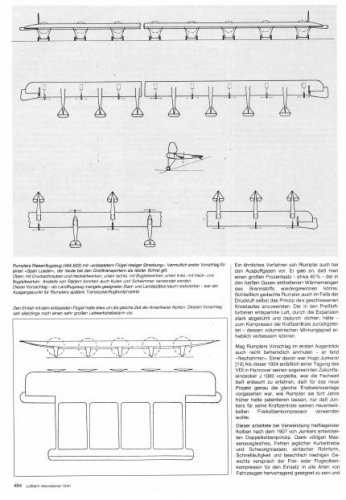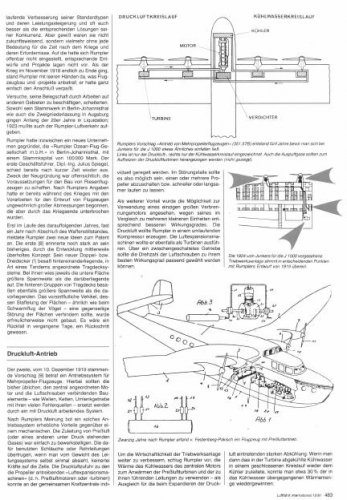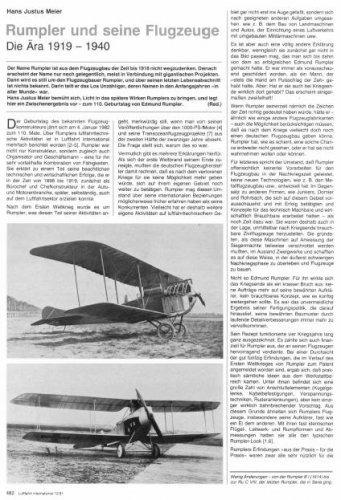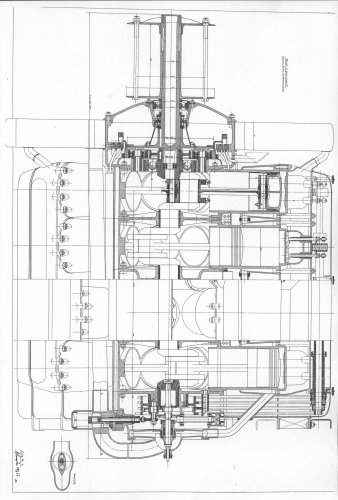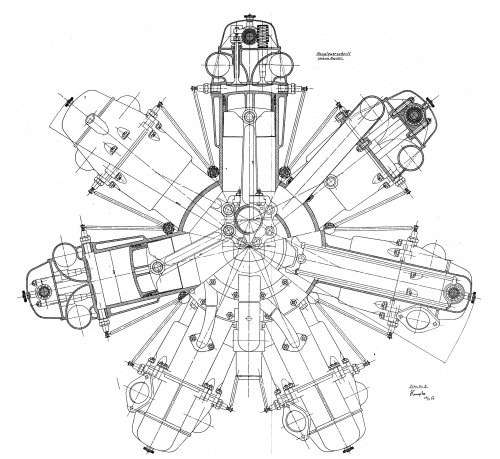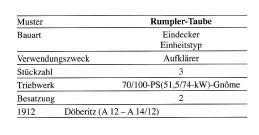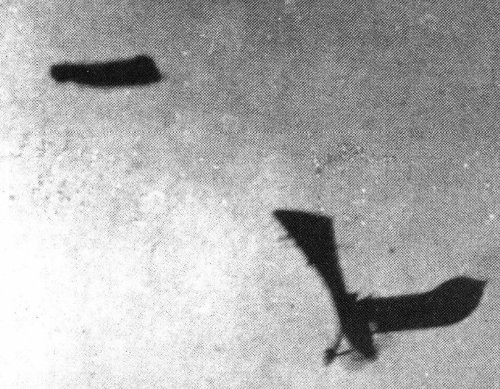List of Rumpler aircraft 1908 - 1918 - Part 3
The First World War.
Rumpler Ru 4A: Two-seater biplane. 1 x Daimler D I, 105 hp. 1 built (1914).
Rumpler Ru DDD: Modified Ru 4A with X struts. 1 built (1914).
Rumpler Ru 5 DDD: Variant of Ru DDD. 1 built (1914), but not flown.
Rumpler Ru 4A13: Variant of Ru 4A with bigger span. 1 x Daimler D I, 105 hp. 1 built (1914).
Rumpler Ru 4A14: Variant of Ru 4A with bigger span. 1 x Benz Bz III, 150 hp. 1 built (1914).
Rumpler Ru 4B1: Floatplane. Ru 4A with central float. 1 x Daimler D I, 105 hp. 1 built (1914).
Rumpler Ru 4B2: Floatplane. Ru 4A14 with central float. 1 x Benz Bz III, 150 hp. 1 built (1914).
Rumpler Ru 4E: Two-seater biplane flying boat. 1 x Austro-Daimler, 120 hp. 1 built (1914).
Rumpler B I: Series of Ru 4A with some modifications. 1 x Daimler D I, 105 hp. Ca. 200 built (1914).
Rumpler Ru 4B11: Variant of Ru 4B1 for coastal reconnaissance. 1 x Benz Bz I, 100 hp. 18 built (1914).
Rumpler Ru 4B13: Variant of Ru 4B2 for coastal reconnaissance. 1 x Oberursel U III, 160 hp. 1 built (1914).
Rumpler Ru 4B12: Variant of Ru 4B2 for coastal reconnaissance. 1 x Benz Bz III, 150 hp. 30 built (1915).
Rumpler Ru 4A2: Two seater biplane. 1 x Benz Bz III, 150 hp. 1 built (1915).
Rumpler Ru 4A15: Three-seater biplane with push propeller. 2 x Benz Bz III, 150 hp. 1 built (1915).
Rumpler Ru 5A2: Two-seater reconnaissance biplane. 1 x Daimler D III, 160 hp. 1 prototype built (1915) and series production of 2362 as Rumpler C I (1 x Daimler D III, 160 hp) and Rumpler C Ia (1 x Argus As III, 180 hp).
Rumpler Ru 5A3: Two-seater reconnaissance biplane. 1 x Argus As III, 180 hp. 1 prototype built (1915) as Rumpler C II.
Rumpler Ru 5A15: Three-seater bomber. 2 x Daimler D III, 150 hp. 1 prototype built (1915) and series production of 58 as Rumpler G I.
Rumpler Ru 5A4: Biplane with 1 x Daimler D III, 160 hp. 1 built (1916).
Rumpler Ru 5A16: Modification of Ru 5A15. 2 x Benz Bz IV, 220 hp. 2 prototypes built (1915) as Rumpler G II.
Rumpler Ru 6B12: Single-seater naval fighter. 1 x Daimler D III, 160 hp. 1 prototype (1915) and series producion of 88 as Rumpler 6B I and (with modifications) Rumpler 6B II.
Rumpler Ru 6A2: Two-seater biplane. 1 x Daimler D III, 160 hp. 1 built (1916).
Rumpler Ru 6A5: Two-seater reconnaissance biplane. 1 x Benz Bz IV, 220 hp. 1 prototype built (1916) and series production of 42 as Rumpler C III.
Rumpler Ru 6A6: Modification of Ru 6A5. 1 x Benz Bz IV, 220 hp. 1 built (1916).
Rumpler Ru 6A7: Two-seater biplane. 1 x Daimler D IVa, 260 hp. 1 prototype (1916) and series production of 2200 as reconnaissance planes Rumpler C IV (1 x Daimler D IVa, 260 hp) and Rumpler C VII (1 x Maybach Mb IVa, 260 hp). Ca. 20 were built as battle planes Rumpler C V (1 x Maybach Mb IVa, 260 hp).
Rumpler Ru 6A8: Two-seater trainer. 1 x Argus As III, 180 hp. 1 prototype (1916) and series production of ca. 80 as Rumpler C VIII.
Rumpler Ru 6G2 and Rumpler Ru 6G3: Four-seater bombers. 2 x Daimler D IVa, 260 hp. 1 prototype of each (1916) and series production of ca. 20 as Rumpler G III.
Rumpler Ru 7C1: Experimental two-seater biplane. 1 x Daimler D III, 160 hp. 1 built (1917). A modified prototype Ru 7C1 was built with 1 x Maybach Mb IV, 260 hp. Series production of 20 as Rumpler C IX.
Rumpler Ru 7D1: Single-seater biplane derived from Ru 7C1. 1 x Daimler D III, 160 hp. 1 built (1917).
Rumpler Ru 7D2: Single-seater biplane derived from Ru 7C1. 1 x Daimler D III, 160 hp. 1 built (1917).
Rumpler Ru 7D3: Single-seater biplane. 1 x Daimler D III, 160 hp. 1 built (1917).
Rumpler Ru 7D4: Single-seater biplane. 1 x Daimler D III, 160 hp. 2 built (1917).
Rumpler Ru 7D5: Single-seater biplane derived from Ru 7D4. 1 x Daimler D III, 160 hp. 1 built (1917).
Rumpler Ru 7D6: Single-seater quadruplane with rotary engine. Only project (1917).
Rumpler Ru 7D7: Single-seater biplane derived from Ru 7D4. 1 x Daimler D IIIa, 180 hp. 1 built (1917).
Rumpler Ru 7D8: Single-seater biplane derived from Ru 7D7. 1 x Daimler D IIIa, 180 hp. 1 built (1918).
Rumpler 6G4: Modification of Rumpler G III. 1 built (1918).
Rumpler Ru 8D1: Single-seater biplane fighter derived from Ru 7D7. 1 x Daimler D IIIa, 180 hp. 1 prototype (1918) and series production of 22 as Rumpler D I.
Rumpler Ru 8C12: Two-seater biplane. 1 x Daimler D IVa, 260 hp. 1 built (1918).
Rumpler Ru 8C13: Two-seater biplane. 1 x Daimler D IVa, 260 hp. 1 built (1918).
Rumpler Ru C14: Two-seater reconnaissance biplane. 1 Maybach Mb IVa, 260 hp. 1 prototype (1918) and series production of 3 as Rumpler C X.
Rumpler C XI: Two-seater reconnaissance biplane. 1 Maybach Mb IVa, 260 hp. 1 built (1918).
Rumpler C XII: Two-seater reconnaissance biplane. 1 Maybach Mb IVa, 260 hp. 4 built (1918).
Rumpler C XIII: Two-seater battle biplane. 1 Maybach Mb IVa, 260 hp. 3 built (1918).
To be coninued...

